Best Practices for Cloud Security in Small Enterprises
As small enterprises increasingly adopt cloud computing to streamline operations and enhance flexibility, ensuring the security of cloud-based systems and data becomes paramount. Cloud security is a shared responsibility between the cloud service provider and the enterprise, and small businesses must implement best practices to safeguard their data. In this blog, we'll explore essential cloud security best practices for small enterprises.
The first step in ensuring cloud security is selecting a reputable cloud service provider (CSP). Evaluate CSPs based on their security measures, compliance certifications, and track record. Look for providers that offer robust security features, such as data encryption, multi-factor authentication, and regular security audits. Popular CSPs like Amazon Web Services (AWS), Microsoft Azure, and Google Cloud Platform (GCP) have strong security frameworks in place.

- Implement Strong Access Controls: Controlling access to your cloud-based systems is crucial for preventing unauthorized access. Implement the principle of least privilege (PoLP), granting users only the permissions they need to perform their tasks. Use role-based access control (RBAC) to manage user access based on their roles within the organization. Additionally, enforce multi-factor authentication (MFA) to add an extra layer of security.
- Encrypt Your Data: Encryption is a critical component of cloud security. Ensure that your data is encrypted both in transit and at rest. Use strong encryption protocols such as AES-256 for data at rest and TLS for data in transit. Most CSPs provide built-in encryption services, making it easier for small enterprises to implement robust encryption measures.
- Regularly Update and Patch Systems: Keeping your software and systems up to date is essential for protecting against vulnerabilities. Regularly update and patch your operating systems, applications, and security software to mitigate the risk of cyberattacks. Enable automatic updates where possible to ensure timely application of security patches.
- Monitor and Audit Cloud Activity: Continuous monitoring and auditing of cloud activity are vital for detecting and responding to security incidents. Use cloud-native monitoring tools or third-party solutions to track user activity, access logs, and system performance. Set up alerts for suspicious activities and conduct regular security audits to identify and address potential vulnerabilities.

- Implement Data Backup and Recovery Plans: Data loss can have devastating consequences for small enterprises. Implement robust data backup and recovery plans to ensure business continuity in case of data breaches, accidental deletions, or system failures. Regularly back up your data to multiple locations and test your recovery procedures to ensure they work effectively.
- Educate and Train Employees: Human error is a common cause of security breaches. Educate and train your employees on cloud security best practices, such as recognizing phishing attempts, using strong passwords, and following company security policies. Regular training sessions and awareness programs can help create a security-conscious culture within your organization.
- Secure Endpoints and Devices: As employees access cloud-based systems from various devices, securing endpoints becomes crucial. Implement endpoint protection solutions, such as antivirus software, firewalls, and mobile device management (MDM) tools, to safeguard devices used to access cloud services. Ensure that devices are regularly updated and configured with strong security settings.
- Establish a Cloud Security Policy: Develop and enforce a comprehensive cloud security policy that outlines the security measures, protocols, and responsibilities within your organization. The policy should cover areas such as data protection, access controls, incident response, and compliance requirements. Regularly review and update the policy to address emerging threats and changes in the cloud environment.
- Ensure Compliance with Regulations: Small enterprises must comply with relevant data protection regulations and industry standards. Familiarize yourself with regulations such as GDPR, HIPAA, and PCI DSS, and ensure that your cloud security practices align with these requirements. CSPs often provide compliance certifications and tools to help you meet regulatory obligations.
Conclusion
Securing your cloud-based systems and data is essential for protecting your small enterprise from cyber threats and ensuring business continuity. By following these best practices, you can strengthen your cloud security posture and safeguard your valuable data. Remember, cloud security is a continuous process that requires ongoing monitoring, updates, and employee training.

























